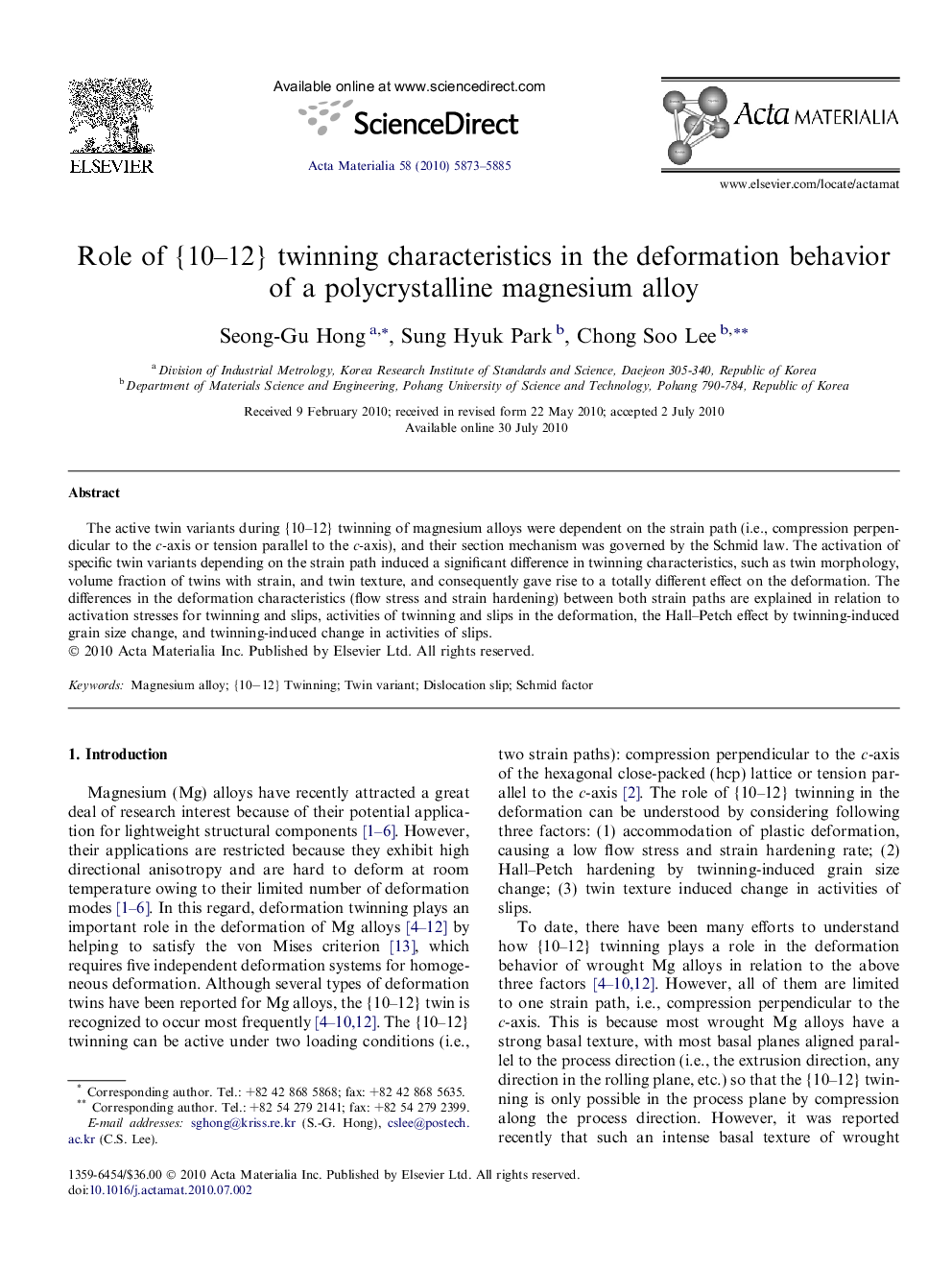| Article ID | Journal | Published Year | Pages | File Type |
|---|---|---|---|---|
| 1447563 | Acta Materialia | 2010 | 13 Pages |
The active twin variants during {10–12} twinning of magnesium alloys were dependent on the strain path (i.e., compression perpendicular to the c-axis or tension parallel to the c-axis), and their section mechanism was governed by the Schmid law. The activation of specific twin variants depending on the strain path induced a significant difference in twinning characteristics, such as twin morphology, volume fraction of twins with strain, and twin texture, and consequently gave rise to a totally different effect on the deformation. The differences in the deformation characteristics (flow stress and strain hardening) between both strain paths are explained in relation to activation stresses for twinning and slips, activities of twinning and slips in the deformation, the Hall–Petch effect by twinning-induced grain size change, and twinning-induced change in activities of slips.
